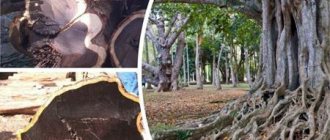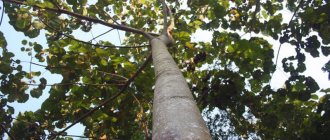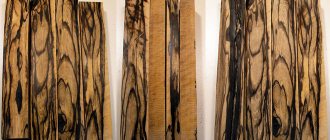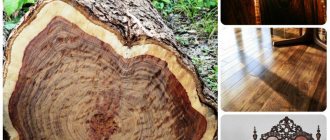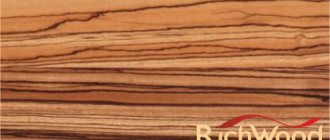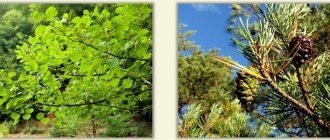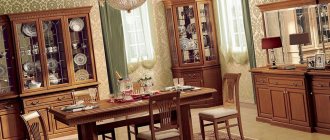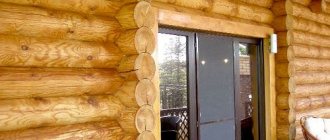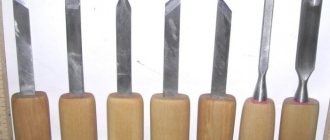A huge, powerful tree with long and sweeping branches, a thick trunk and capable of living for several hundred years - and this is the whole Beech tree from the Beech family. It not only amazes with its grandeur and can protect you from sultry heat or heavy rain under its branches, but beech wood is also used to make all kinds of furniture, floors, etc. If you are planning to plant a plant, but don’t yet know which one, we recommend taking a closer look. to beech, but we will tell you what properties it has and how to plant and care for it in this article.
Description of the genus
Beech (from the Latin Fagus) is a deciduous plant. Since ancient times, it has been considered a place of concentration of strength and energy, and all this is due to its appearance. Let's look at the description of the tree in more detail.
Appearance
Beech grows at an average rate and can reach about 35-40 meters in length and 2 meters in width. For the first 100 years, the beech actively grows upward and only then begins to expand in width. The crown has a tent-shaped shape, the lower branches, which are located deep in the crown, due to lack of sunlight, gradually die off and are replaced by new ones. The branches themselves are thin but long. Quite often you can notice a root paw in beech, which is typical for older trees.
In young trees, the bark looks darker and has a gray-brown tint, in older trees it is gray.
Buds and leaves
Beech leaves are light green in summer, yellow in autumn and brown in late autumn and winter, arranged in two rows. They have the shape of an ellipse with a pointed top, the leaves are quite large, approximately 5-10 cm in length.
It is worth noting that beech has fruits - small nuts with a brown shell. Each nut contains seeds. They ripen in late summer - early autumn and fall quickly, from October to November. If the year is not fruitful, then you can harvest about 8 kg of crop. Abundant yields can be expected approximately once every 10 years. The beech tree begins to bear fruit only at the age of 40.
Root system
The root system of the Beech tree is very well developed, highly branched and has several large “anchors” that penetrate deep underground. As already mentioned, in mature trees the roots may extend slightly outward. Very often, the roots of trees that grow close to each other intertwine and grow together. A distinctive feature of the tree is that it does not have central rods.
Technological and operational properties
The main indicators of the technological and operational properties of beech wood are comparable to the values for other species:
- impact strength is 7.6 kJ/m2;
- end hardness is 65.1 N/mm2, radial – 53.2 N/mm2, tangential – 49.5 N/mm2;
- microhardness of the early zone – 57.0 MPa, core rays – 84.2 MPa;
- impact hardness is 0.96 J/cm2;
- wear resistance, or abrasion, in the cross section is 0.10 mm, in the radial section - 0.17 mm, in the tangential section - 0.14 mm.
According to European standards, beech is an unstable species, compared to the resistant oak and moderately resistant pine. According to the Russian resistance scale, where the resistance of linden sapwood is taken as one, the following values are derived for beech:
- mature wood – 3.3;
- sapwood – 2.5.
Regarding susceptibility to rot, beech heartwood is medium resistant, and sapwood is low resistant. Beech wood is more likely to be affected by fungi than oak wood.
Beech species
In the wild, beech has about a dozen different species, but the most popular species that are used for planting on their own territories and cottages are the following trees:
- Fagus japonica (Japanese beech). It is widespread in the East and has more compact forms, that is, it grows to a maximum of 20 meters in length. The trunk is branched, the leaves have a classic shape and color;
- Fagus sylvatica (European beech). Based on the name, we can conclude that this tree is common in Europe and the West. Its appearance is standard: height - about 40 meters, leaves - light or dark green with jagged edges;
- Fagus orientalis (Oriental beech). Distributed in the Caucasus and the Black Sea coast. The leaves have an elongated shape, the height of the tree reaches 40 meters;
- Fagus grandifolia (Large-leaved beech). It has rounder and elongated leaves, which is why it received its characteristic name. It grows mainly in North America.
What a beech tree can be
The wood of this naturally occurring tree is widely and already sufficiently used in various enterprises involved in the production of furniture sets, building materials, and kitchen utensils.
White
White beech is sometimes also called hornbeam. The wood of this tree is whitish-gray, strong and hard. In its raw state, the wood warps greatly, but after drying it does not change its shape at all. Due to its high hardness, white beech is used in modeling and carpentry. Hornbeam is almost never used in furniture making because it does not have an attractive appearance.
Photo of white beech and parquet made from it
Wood
Parquet
Planed
Planed beech is one of the most widely and frequently used wood products in industry. Pre-treated beech is used to make plywood of different thicknesses and chipboard. The main area of use is still considered to be the furniture industry. When making furniture, wood is used in its entirety, in the form of plywood or veneer.
It is customary to make heavily used parts of furniture from beech, that is, seats for chairs or sofas and similar parts. More wooden chairs are made from beech wood. The high strength of this wood allows it to be widely used for the manufacture of stairs and parquet.
Beech is also used to make items for everyday needs, kitchen cutting boards, combs, and tool handles. Wooden toys are also made from wood, and they are smooth. Beech wood has been used since ancient times to make tubs and barrels. The practicality of beech products, subject to the standards of its manufacture, can be assessed as five points.
What does planed beech look like?
Bleached
Bleached beech is obtained as a result of dyeing. In order to achieve an even shade of wood, the workpiece is steamed for a certain time, then painted and dried. Bleached wood is used to make various furniture and parquet.
Beech wood has found its use not only in the manufacture of all kinds of popular building materials and wooden furniture. Special processing of wood makes it possible to obtain from it raw materials for the production of certain medicines, acetone, and a sugar substitute - xylitol. If necessary, beech can be processed independently, without the use of special special devices.
Photo of bleached beech furniture
Spreading
Some scientists claim that beech grew on the planet even before our era and occupied the territory from the Urals, through Kamchatka, Greenland, Alaska and Canada. And later they began to grow in North America and southern Eurasia.
During the Ice Age, the number of trees decreased significantly and conifers began to grow instead. It is for this reason that the territories of many countries today are not covered with beech.
Nowadays beech grows in all corners of the earth; it can be found in America, Europe, and Russia. It prefers fertile soil and therefore grows in areas from 1500 to 2500 meters above sea level.
Decorative properties
Eastern beech is an ornamental tree and shrub (when young), widely used to create green walls and hedges. They look great in combination with many coniferous and deciduous crops. Beech is used for both single and group plantings. Often these plants decorate city parks, areas of hospitals and sanatoriums, holiday homes and children's camps. The plant is decorative throughout the year, but beech is especially beautiful in the fall, when the foliage turns a bright golden-orange color.
Planting and care
Most inexperienced gardeners do not plant beech, although they are impressed by the appearance of this tree. The thing is that few people know how to properly plant and care for a beech tree, because it is so large. There's really nothing complicated about it. Next, we will describe in detail the procedure for planting a tree and caring for it, and then all your fears will disappear by themselves.
Landing
The most difficult thing at this stage is to choose the right time for planting. The optimal time is spring, but you should pay attention to ensure that the buds do not have time to bloom by this time, otherwise the beech will grow more slowly and get sick often.
As for the soil, beech can take root in any, but it will be better if the soil is fertilized and fertile.
Another nuance that is worth considering is the availability of sufficient space, because beech is a long-liver, and the root system of an adult tree requires a lot of space. It will be better if the area is fenced, since the tree does not grow well on trampled ground.
To plant a tree, it is better to dig a larger hole, about 80 by 80 cm, and drain the soil well. It is at this stage that you can add fertilizer to start active growth and development of the root system. After planting, it is necessary to water the seedling and cover it with dry grass. This is done so that the moisture does not evaporate quickly, because the tree grows better at high humidity.
In order for beech to develop actively, it needs a lot of sunlight and a cool climate. The crown may sometimes need additional moisture.
Care
There are three main aspects that you will need to pay attention to after the tree is planted.
Care measures
| Kind of activity | Description |
| Watering | Moisture plays one of the most important roles for the full and healthy growth of a tree. It is necessary to water a young plant, as well as spray it, once a week. In hot climates, watering can be daily, but the likelihood that beech will develop fully in such conditions is minimal. Very mature trees, in a favorable climate, may not need to be watered at all. |
| Fertilizer | Many gardeners believe that beech requires feeding only at the initial stage of growth. This is true, but if you want to stimulate the growth of the plant and protect it, then you can fertilize it in early spring or late autumn. |
| Trimming | At the initial stage of development, pruning a tree is quite easy and the gardener can independently select the shape. But it is almost impossible to prune an adult plant, because it reaches amazing proportions. It is best to prune beech trees in early spring. In addition to pruning, it is necessary to remove old and diseased branches. |
Physical properties of beech
Beech has hard and dense wood with streaks of texture, which gradually changes color during storage from yellowish to pink-brown.
Beech is easy to process, easy to sand, chip and bend. Beech wood is suitable for making furniture, musical instruments, veneer, and plywood. Beech is used to make parquet and lumber for construction. Beech processing waste is used to fire stoves and fireplaces.
Beech is susceptible to destruction by fungi, mold and rot in conditions of high humidity and in contact with the ground, therefore, when building outdoors, it requires treatment with special protective compounds. It is recommended to process fallen beech trees immediately after harvesting.
To improve performance characteristics and color correction, beech wood is treated with special protective and tinting compounds.
Reproduction
Beech propagation can occur in several ways:
- using seeds;
- vaccination;
- using cuttings;
- tap.
It is best to propagate a tree using ripe seeds, because all other methods do not guarantee results.
After the seeds are collected, it is necessary to keep them for some time in a manganese solution. When it gets warm outside, they can be planted in the ground.
Diseases and pests
Beech, like any plant, can be negatively affected by various pests and diseases. Most often, the plant is damaged by fungal diseases. In addition, beech can contract trunk cancer.
The most dangerous pests for beech are:
- bark beetles;
- pine beetles;
- caterpillars;
- lacewings;
- shuttlewoman and so on.
In order to avoid attacks by pests and diseases, it is necessary to monitor the condition of the tree, remove diseased areas in a timely manner and take the necessary measures in the event of fungal diseases.
The most important characteristics of beech wood
Beech, along with such a well-known tree as oak, is classified by specialists as the most valuable wood species. The tree most often reaches a height of 40-50 meters in natural conditions; it can grow, it is believed, up to 400-500 years. The wood has a special pattern with narrow heart-shaped, shiny lines, which allows you to get a beautiful pattern on the product after polishing.
Wood retains its natural strength for a long time in a dry place, but quickly rots if the wood fibers are exposed to moisture for a long time. Due to this, beech products are most often intended only for indoor use in residential premises.
Beech is a durable and very strong tree; properly made products from it can withstand high mechanical loads; also, steamed wood bends quite easily, and this helps in the production of bent furniture for the home and office. The complexity of the beech processing process is not too high and costly, so experts rate the ease of working with this type of wood as four points on a five-point measurement scale.
Photo of beech tree
Basic properties:
- Density. Beech as a tree is a species with an average wood density, which is approximately 670 kgm3.
- Strength of wood based on compression ratio. Beech, when compressed along the fibers, has a strength of 46 MPa, in bending 94. When stretched along the wood fibers, the strength of the wood of this tree reaches 129 MPa. It must be taken into account that this compression was determined when the wood moisture content did not exceed 15%.
- Natural humidity. Freshly harvested beech wood typically has a moisture content of 80%. With increased water absorption, wood humidity can reach up to 120% under certain conditions.
- Specific and volumetric gravity. The specific gravity for beech wood can vary in different conditions and depends directly on the percentage of humidity. At 12% of the total humidity, the specific gravity in calculations reaches 630-650 kg/m3.
- Chemical components. Beech wood, like most hardwoods of a wide variety of trees, consists mainly of organic, natural substances. The wood itself has 42.6% cellulose, 24% lingin, 16.7% pentosans, 5.6% hexosans. After the wood is burned, only the ash part remains, amounting to approximately 0.5% of the total mass of the burnt wood.
- Color. Beech is a coreless tree species, that is, one that does not have a visible core, so it is characterized by an almost uniform color of the wood fibers throughout all internal parts. In the wood, wide rays are clearly visible in the form of light rays, diverging in radii from the very middle and towards the outer bark. The color of the wood is slightly pink and reddish and may be yellowish. Old trees are especially valued by cabinetmakers in furniture production, as their wood has a distinct and attractive brownish-reddish color.
- GOST standards To assess the quality of lumber used in the production of beech wood, GOST 2695-83 is applied; according to this standard, the dimensions of the raw material in length and width are taken into account. The type of wood is also important; when determining it, specialists take into account a variety of parameters. These are the presence of knots, fiber tilt, wormholes, rot.
- Combustion temperature. Beech wood makes excellent firewood as fuel; its heat of combustion is 19.7 MJ/kg. When burning, a hot, constant flame is released. The highest combustion temperature and the resulting attractive, aromatic smell allow beech wood to be used as a grill.
- The thermal conductivity of beech wood reaches 0.16 W/(m*K).
- Hygroscopicity is the ability of wood to absorb tiny drops and water vapor from the air. Beech wood quite actively absorbs water vapor, which increases the possibility of its rotting. Due to this property, beech is not used for exterior finishing of houses. But at the same time, the use of paint and varnish coatings reduces the natural hygroscopicity of wood.
Meaning and Application
Beech is not only beautiful, but also a very useful tree. Especially, as mentioned above, its wood is famous.
Beech wood
The density and texture of beech and the material that comes from the trunk is so good that it is excellent for industrial use. Beech fibers are almost indistinguishable when cut, which is why it is often used to create seamless structures.
Beech wood is used to make:
- floors;
- furniture;
- plywood;
- handles of knives or various tools;
- wooden toys and much more.
Main features of beech
Beech wood has a fairly diverse range of colors - from pale pink to completely white.
To give the wood a more uniform shade, the beech is pre-steamed. Otherwise, the texture of the wood will be too colorful. This entire procedure takes almost three days. Beech wood strongly absorbs moisture from the surrounding air; craftsmen even called it “capricious” for this, and some even called it “nervous”. In order to protect the product, special varnishes and other protective agents are used. Beech is highly wear-resistant, which is why wooden stairs are often made from it.
